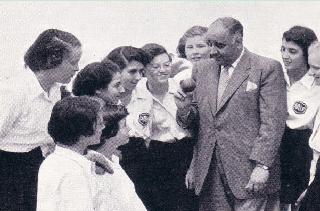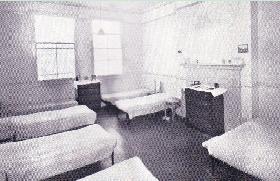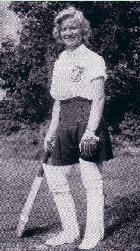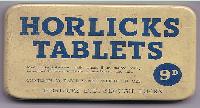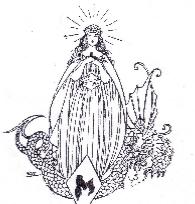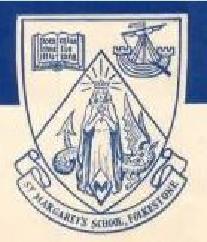1957
In September, four days into the new term, there occurred the worst epidemic in the school's history. Within six da
s over a hundred girls had influenza, as well as several members of staff including Miss French, the Under-Matron.
A corner of the garden behind the main school building was sacrificed for a brand new building to house the Upper 5th, who valued the seclusion while working towards their O-level examinations.
1960
On 2 Jan Dudley Hasson married Janet Morris, a former sixth-form prefect.
1961
Mr Hasson, who had developed diabetes over the past few years, suffered a heart attack on 2 February. He spent several weeks in hospital and gave up school activities for the Lent term. The pantomime, which the girls had just started to rehearse, was postponed to the following year. He was also obliged to give up his former active involvement in directing the school's sporting activities. In October 1962 Mr Hasson again entered hospital but was back within three weeks.
1962
Mr Hasson wrote to Maureen O'Sullivan on 1 October: "For some time now I have been planning to form St Margaret's School into an Educational Trust. This will have the effect of giving the school a higher standing and of ensuring its continuity. It is also a course approved and commended by the Ministry of Education." He asked Maureen to become a governor and invited her to a preliminary meeting to meet the other proposed governors whom he had chosen, along with Mr A L Chubb, the school's solicitor, the accountant Mr G D Lane FCA, and the lawyer Mr Clive Russell-Vick.
1963
On 1 January the Educational Trust was formed. Registered as a charity, it was exempt from taxes. Mr Hasson continued as Principal but on a salary instead of being the owner. The governing Council consisted of:
Mr S M Messer, President Dudley Hasson's cousin, parent and stepfather of the Dearing sisters)
Mr R L Bristow, Chairman (parent)
Mr E A R Chapman (parent)
Mr W T Cosham (parent)
Mr C D Hasson (Colin, Dudley's son)
Mrs Janet Hasson (Old Girl, Dudley's wife)
Miss E M Kay (Headmistress of a Folkestone school)
Mrs Mary Taylor
Mrs Ruby Thomas (Old Girl, parent)
Mrs Maureen Olley (Old Girl)
Mr J W Walker (parent)
Miss Gladys F M Wright (Principal, Nonnington College)
The Council met once a term and appointed from their number a standing committee of five which met monthly. Ex-officio members of the standing committee were the Headmistress, the Bursar and the accountant, Mr Lane. Mr Hasson retired at the end of the spring term of 1966 and his deputy, Mrs Kathleen Whiteside, took on the responsibility of Acting Headmistress for the summer term while a replacement was being sought. Janet Hasson, Colin Hasson and Mr Messer left the Board of Governors and were replaced, in order to keep the number at twelve, by parents Mr A P Salter, Mrs A Standeven and Mr K Waite.
Mr Hasson died on 24 April 1966, in his mid sixties, during the Easter holidays following his retirement. Miss Freda M Maggs, who had taught many subjects throughout the Hasson era, suggested to the Old Girls' Society that a memorial tablet would be appropriate. Supplemented by donations from old girls, she provided the funds anonymously, and a polished red granite plaque was erected in Bay 6, Position 4 of the cloister wall at Hawkinge Crematorium.
Dudley's mother, known to all the girls as Granny Hasson, was a familiar figure in the school and well loved by all. Her name was Annie, but she preferred to be called Netty. She was greatly missed when she died a few months after her son's death.




